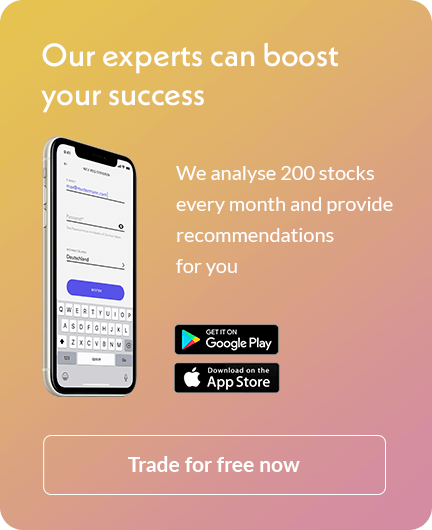What is ethereum? Learn more about this cryptocurrency
Founded by the co-founder of Bitcoin magazine, Ethereum is a fully decentralised blockchain system that has its own cryptocurrency.
Below, we look to answer “What is Ethereum?” in more detail, explaining the differences between Ether and Ethereum and uncovering their real-world uses. We look back through the history of the second-largest cryptocurrency, as well as advising you on how best to get your hands on Ethereum CFD.

The second-largest cryptocurrency
It’s hard to talk about Ethereum without explaining briefly about blockchain technology first. A blockchain is a type of database – a decentralised public ledger, home to all crypto transactional data. A blockchain groups information together called blocks. These blocks have storage capacities and, once filled, are chained to the previous block, thus creating a blockchain. This system creates an irreversible timeline of data. Ethereum is the world’s programmable blockchain.
Ethereum is a technology that aims to replace centralised parties that store data and financial records. To accomplish this, Ethereum utilises nodes run by volunteers to replace cloud systems owned by major internet providers and services. The nodes create a global computer and sufficient infrastructure, meaning no one entity would have full control of your data – proving less vulnerable to hacks.
Blockchain transactions make use of cryptography to ensure the network is kept secure and to help verify transactions. The use of computers to mine and solve complex mathematical equations confirms each transaction on the network, adding a new block to the blockchain. Participants are then rewarded with cryptocurrency tokens. For the Ethereum system, these tokens are called Ether (ETH).
A unique perk of the Ethereum blockchain is that users can build applications that run on the blockchain, just like software works on a computer. In turn, this creates a decentralised global computing engine and openly verifiable data store.
Ether vs Ethereum
In its simplest form, Ether is a digital currency – the cryptocurrency of the Ethereum network. You can use Ether when looking to make financial transactions, hold it as an investment or as a store of value. It also acts as fuel for the network’s decentralised apps. Any app created, modified or used requires processing power, and to cover the cost, you can use your Ether.
Ethereum, on the other hand, is a software. A blockchain network where, as well as providing many other functions, Ether is held and exchanged.
One of the most exciting and intuitive examples of using both Ether and Ethereum is the utilisation of smart contracts. Not only do these contracts solidify the real-world use of the network, but the peer-to-peer approach allows for reduced fees, lawyers and need to be physically present. The idea of a smart contract is like any other contract; two parties make an agreement regarding the delivery of goods or services in the future. For example, buying a house or even booking a holiday. This contract is then coded onto the Ethereum blockchain, and once the conditions of the contract are met, it will self-execute and send Ether to the relevant party.
The history of Ethereum
First described in Vitalik Buterin’s whitepaper in 2013, development was crowdfunded a year later, and Ethereum was born.
After a rigorous trial period, the Ethereum team hosted what they called a Bounty Program. Security is at the core of the Ethereum network, and its team were so convinced of its safety features it held the Bounty Program as a way to test outside of the tribal confines. The program offered various crypto rewards (predominantly Bitcoin) to any users who were able to find a weakness within the software. This idea proved successful and is a factor in the continued reliability, security and confidence of the Ethereum technology.
After the successes of the Program, Ethereum trading opted to go live in 2015. Those who had begun mining ETH had already pre-mined 72 million coins and were beginning to earn Ether from blocks. Later in 2015, developers began to write smart contracts and create the first decentralised apps (DApps) to feature on the Ethereum network.
As we enter 2016, unfortunately, Ethereum saw its first hack take place. A flaw in the third-party project DAO allowed for over $50 million of ETH to be stolen. This created the first hard fork of the Ethereum network, allowing users to be reimbursed with their lost ETH.
The idea behind a blockchain is that it is unchanging, contracts are self-enforced, and once a transaction is verified, it cannot be altered. Due to this, the Ethereum trading community did not respond well to the reimbursement of funds.
The community was split in two. One-half of the Ethereum supporters agreed that returning the funds to its rightful owners was the correct approach to take. However, the other half argued that it went against the basic principles of the blockchain, and if users had lost their funds due to a hack, no action should be taken. Eventually, this disagreement led to the creation of Ethereum Classic (ETC).
The popularity of the Ethereum network was showcased in 2020, where they added nearly 15 million addresses to their platform – more if you count those who hold an asset value of 0. Although ranked the second-largest cryptocurrency, Ethereum has now overtaken Bitcoin in wallet totals by nearly 20 million.
Key milestones & future outlook
The original Ethereum roadmap consisted of four developmental stages – Frontier, Homestead, Metropolis and Serenity.
Starting in 2014, Frontier was the first stage of the Ethereum network and provided basic functionality. Traders were now able to mine, build, test, sell and buy Ethereum, whilst developers could begin to upload smart contracts and DApps.
The safety of the network was confirmed on block 1,150,000, and the beta stage of Ethereum was now over. Homestead was a smaller upgrade, allowing debugging to be completed easier when required, and resulted in several protocols and networking changes.
The Metropolis update enabled increased anonymity and advanced security in the form of masking. Developers began to take advantage of the improved smart contract functionality, allowing for easier programming, automated coding and reduced costs.
Serenity sees the platform come to the end of its original roadmap. The introduction led to greater security, scalability and efficiency.
The transition to Ethereum 2.0 is now imminent. Users of the network are particularly looking forward to the introduction of sharding – a process that divides data processing between several nodes. The transition to Ethereum 2.0 will also see a change from their Proof of Work system (PoW), choosing to utilise the Proof of Stake system (PoS) instead, helping to stabilise the block speed.
Vitalik Buterin recently released a quick merge via fork choice change, meaning only one honest miner is required for the merge between Serenity to Ethereum. If Ethereum is true to its word, and version 2.0 is able to accommodate the reduction in its transaction time, it would be fair to assume the future of Ethereum is incredibly promising.
The change to Ethereum 2.0 would also cement the real-world use and benefits of the Ethereum trading network. The enhanced privacy and security, transaction speed and reduction of third-party fees could revolutionise the financial world. Not only this, but It could become the most trustworthy approach to voting, eradicating malpractice and allowing complete public availability.
2021 has seen Ethereum break all-time high’s consistently, and, from the points mentioned above, we can only see momentum continuing to grow with their exciting evolution on the cards.
Security, features & use cases
Ethereum, as a whole, is a very secure network, and it is important to remember the theft relating to DAO came from the infrastructure of smart contracts, not from the Ethereum platform itself. As a general rule for any investment, traders should research the products thoroughly, ensuring you do your due diligence uncovering as much information about your funds’ security and safety as possible.
We touched on Ether’s use case earlier on in our What is Ethereum guide. However, to recap, Ether can be used as a digital currency on exchanges in the same way as any other currency, and it is used as fuel when running, creating or modifying apps within the Ethereum network, covering the cost of processing power used.
Ethereum is home to traders and developers alike, utilising the Ethereum network to create decentralised apps (dapps). These apps provide a direct, peer-to-peer link between the app providers and its user. The nature of decentralised apps ensures any transfer of data, action or transaction that occurs on the app will be free from censorship, fraud and interference from third parties.
Smart contracts
These underlying rules run true throughout smart contracts too. Anyone on the Ethereum network can create, send and receive smart contracts, with funds only being received once both parties meet the conditions set out in the agreed contract. The simplicity and security of these contracts remove the need for a third party, lowering additional costs and any form of tampering.
Ethereum is already being used by banks worldwide due to its secure system, removing the threat of hacks almost completely. We are also finding more and more cases of Ethereum being used where disputes could occur. Prime financial examples of these include tenancy agreements, mortgages and even wills. Prime political examples of this include voting systems – eliminating any malpractices.
With the imminent release of Ethereum 2.0, users, traders and developers can feel safe knowing that security measures are once again being improved. This time by the implementation of the proof of stake consensus mechanism. The reduction of transaction times is another key attribute and improvement that could lead to further acknowledgement of the Ethereum network holding a very real-world use.
Step-by-step guide to buy Ethereum
When looking to buy cryptocurrency, it isn’t always easy to know where to begin. There are a lot of helpful sites advising traders how to buy Bitcoin, but lesser-known cryptos do not have the same advantage. Thankfully, the process is not too different and our What is Ethereum guide will take you on a step-by-step journey on how to get your hands on some Ethereum CFD.
Before you can start trading CFDs, you will first need to set up your account. When using a trusted broker like nextmarkets, you can eradicate the worry of signing up to a fraudulent platform – we are licensed by the Malta Financial Services Authority and adhere to European regulations.
Not only do we offer our clients the chance to trade stocks, indices, currencies, commodities and cryptocurrency CFDs, we ensure you can set up your account within minutes, trade on the go using our app, and we also keep your funds segregated from our own, allowing for quick and efficient traceability.
We mention trading Ethereum CFD, but what does this mean? CFD stands for Contract for Differences, a term used in the trading world to explain that clients are not directly purchasing an asset; instead, they are placing an order on an asset’s predicted price movement.
For example, Client A would look to place a buy order on the Ethereum CFD in the hope that the price would rise before Client A came to close his position, thus making a profit.
We at nextmarkets offer our users the chance to set up an account online through their desktop or laptop, as well as by downloading our intuitive and fun app.
When looking to use the platform on your mobile web browser, you will be advised to download the app. However, you can still access key information about the site – FAQs, Contact Us, Legal Info etc. Once your download is complete and you have selected “open account”, you will need to start inputting your personal details, including:
- Email address
- Password
- Country of residence
Once you have read through the terms and conditions and privacy policy, you can select the box to confirm you agree before clicking “confirm” to continue.
The next step involves inputting your mobile telephone number; please have this to hand as you will be asked to verify a 6-digit code on the screen sent to you via SMS. You will then be asked to fill in the below information:
- Gender/Preferred pronoun
- Full name
- Nationality
- Date of birth
- Address
- Occupation
- Trading knowledge
- How you plan to fund your account
As we near the end of the verification process, you will be asked to select and upload your chosen form(s) of identification. This includes a passport or driving licenses, followed by a proof address. When using the app, users can take a photo directly in the app, and once you have confirmed your email address, your account is ready to go. Once approved, you will need to select a deposit method and fund your account. Cryptocurrencies are an exciting but highly volatile market – please only deposit what you can afford.
When your deposit has been credited to your account, you can use some industry insight from our What is Ethereum guide, as well as your own external research on the world’s second-largest cryptocurrency to best predict price movement. All that’s left to do now is filter through the cryptocurrencies to find the Ethereum CFD market and place your order.
Ethereum 2.0 and beyond
Ethereum is coming to the end of its original roadmap, ready to embark on a new journey of greater security, lower transaction costs and much more. Ethereum can already boast being the largest and most well-established decentralised software platform in the crypto world, and it is just getting started.
As the network continues to evolve and develop, the real-world need is becoming more and more evident. Within the financial sector, offerings of higher privacy, security and minimal third-party fees will always be welcomed, and the Ethereum 2.0 upgrade will tick all of these boxes.
As previously mentioned, cryptocurrency markets are volatile, and there is a genuine risk with trading cryptocurrency CFDs. However, one risk you can remove from your trading career is your account and fund security by choosing a reputable and accessible broker, like nextmarkets.
What is Ethereum FAQs
- Stock trading for beginners
- What are stocks, shares and equities?
- How to buy stocks
- How to short stocks
- Stock market analysis - How to research stocks 2023
- What are ETFs
- What is cryptocurrency
- Currency trading for beginners
- What is forex market?
- How to trade forex? 2023 Guide for Beginners
- What is forex lot size?
- Trading the news in forex




